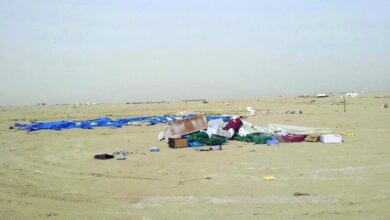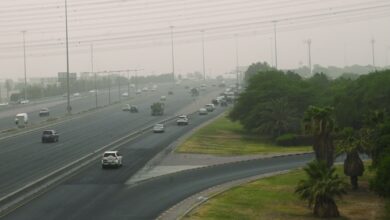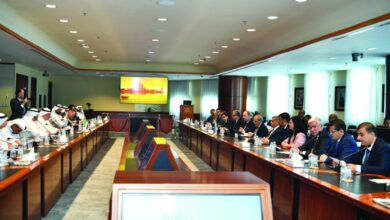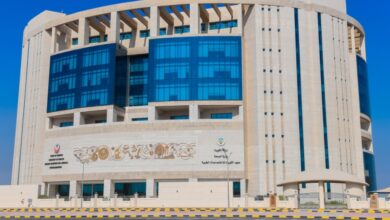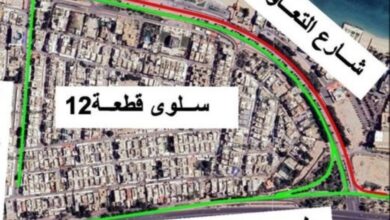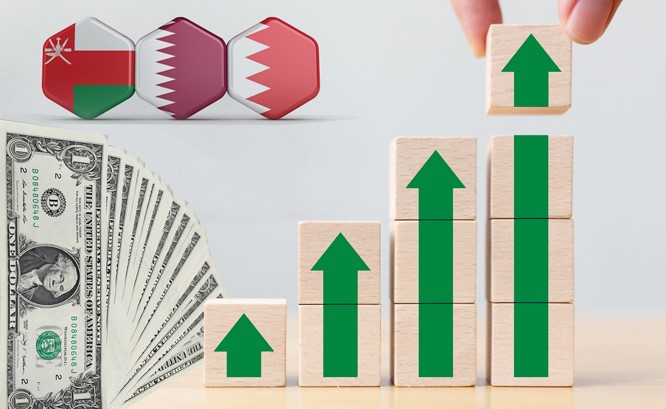
A report by the National Bank of Kuwait (NBK) predicts that economic growth in Bahrain, Oman, and Qatar will recover in 2025, with non-oil GDP growth expected to exceed 3% on average. This growth will be supported by government initiatives, projects, and lower interest rates.
A NBK report stated that Bahrain’s budget is expected to continue recording a financial deficit in 2025, due to the anticipated decline in oil prices. However, the country’s efforts to control public finances are expected to continue.
On the other hand, Oman’s economic reform efforts over the past years have successfully reduced the debt-to-GDP ratio. The Sultanate is also preparing to launch its new five-year plan, which combines further diversification initiatives with a focus on sustainability.
As for Qatar, the economy is expected to continue recovering from the slowdown following the FIFA World Cup 2022. Growth recovery is anticipated, supported by rising visitor numbers and large-scale expansion plans in liquefied natural gas production, which is currently underway.
Bahrain: Deficit is the most prominent challenge
Regarding the Bahraini economy, the National Bank report mentioned that GDP grew by 2.3% year-on-year in the first half of 2024, driven by a strong increase in non-oil GDP (3.1%). This growth outperformed the contraction in the oil sector, which saw a decline of 2.1%.
The report expects Bahrain’s economy to grow by 1.8% in 2024, down from 2.5% in 2023. However, growth may accelerate to 3.9% in 2025, driven by policies to ease monetary conditions due to lower interest rates and the recovery of the hydrocarbon sector following the reduction of oil production cuts.
The non-oil sector, which accounted for about 86% of GDP in the second quarter of 2024, will remain the main driver of growth. This reflects ongoing efforts to strengthen key sectors, including manufacturing and tourism.
Meanwhile, the value of projects funded by the GCC Development Fund, awarded from 2017 to Q1 2024, amounted to about $6 billion, with a major focus on housing.
Lower interest rates globally and regionally will play a key role in managing the debt-to-GDP ratio, which has increased significantly. The ratio is expected to decline slightly to below 130% in 2024, down from 100% in 2020.
However, the public finance deficit in Bahrain is expected to widen to 6% of GDP in 2025, due to the anticipated decline in oil prices and ongoing structural challenges, such as continued reliance on oil revenues and high interest costs, which make up about 35% of total expenditures. Further fiscal consolidation measures are urgently needed to restore financial stability in the medium term and put the debt-to-GDP ratio on a downward trajectory.
Oman: Improvement in public finances
In Oman, the National Bank expects non-oil growth to reach 2.7% in 2024 and rise to 3.5% in 2025, driven by macroeconomic reforms and lower inflation levels. Inflation averaged 0.6% year-on-year from January to September 2024, compared to 1.0% in 2023.
The low interest rate environment is expected to support non-oil growth momentum, with policy rates projected to fall to around 4.0% by the end of 2025, down from the current 5.5%.
However, overall economic growth in Oman is expected to remain weak at around 1.3% in 2024 (down from 1.5% in 2023), driven by a 1.7% contraction in hydrocarbon GDP due to Oman’s commitment to OPEC+ production cuts. Growth is projected to improve in 2025, with average oil production rising by around 2.6% as OPEC removes production quota cuts, pushing overall economic growth to approximately 3.2%.
The continued stability of public finances reflects a positive economic outlook, with the budget expected to record a reduced surplus of 1.4% of GDP in 2024 (down from 2.4% in 2023). This is despite lower hydrocarbon revenues and an 8% increase in expenditures.
On the other hand, lower oil prices are expected to increase pressure on revenues in 2025, but a limited deficit of 0.8% of GDP is anticipated, which remains well below pre-pandemic levels.
Qatar: Moderate growth
As for the Qatari economy, the report expects the economy to see significant improvement, with the growth rate projected to reach 2.4% in 2025, up from 1.8% in 2024, as the effects of the slowdown following the 2022 FIFA World Cup fade.
Non-oil GDP in Qatar is expected to grow between 2% and 3% during 2024 and 2025, following a modest growth of 1.1% in 2023. This growth will be driven by an increase in incoming visitors, workforce expansion, growth in bank credit, lower interest rates, and government measures to boost non-oil economic activity.
As part of Qatar’s third national development strategy, the government aims to achieve an average non-hydrocarbon growth of 4% annually between 2024 and 2030. The focus will be on three key sectors: logistics, manufacturing, and tourism.
The manufacturing sector in Qatar is expected to benefit significantly from the country’s large-scale LNG expansion plans, which will provide more affordable feedstock for refining. LNG production capacity is set to increase by 40% by 2026 (reaching 110 million tonnes per annum) and by 85% by 2030 (reaching 142 million tonnes per annum). However, until then, the contribution of oil and gas production to GDP growth is expected to remain limited.
The Qatar government is expected to maintain strong economic performance, although the fiscal surplus is projected to decrease to an average of 4.2% of GDP in 2024-2025.








